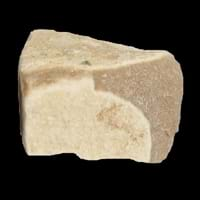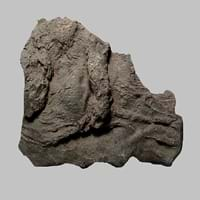Definition
Mudstone is a fine-grained, dark gray sedimentary rock, which is formed from silt and clay and is similar to shale but has less laminations
During the impact melted material forming a breccia containing glass and crystal or lithic fragments together form Suevite rock.
Origin
Unknown
Canada, Germany
Discoverer
Unknown
Unknown
Etymology
From the English mud and stone, from low German mudde and stainaz
No etymologies found
Class
Sedimentary Rocks
Metamorphic Rocks
Sub-Class
Durable Rock, Soft Rock
Durable Rock, Medium Hardness Rock
Group
Not Applicable
Not Applicable
Other Categories
Fine Grained Rock, Opaque Rock
Coarse Grained Rock, Opaque Rock
Color
Black, Blue, Brown, Green, Grey, Orange, Red, White, Yellow
Black, Brown, Colourless, Green, Grey, Pink
Durability
Durable
Durable
Appearance
Rough and Dull
Banded
Interior Uses
Decorative Aggregates, Entryways, Floor Tiles, Interior Decoration
Decorative Aggregates, Homes, Interior Decoration
Exterior Uses
As Building Stone, As Facing Stone, Paving Stone, Roof Tiles
As Building Stone, As Facing Stone, Garden Decoration, Office Buildings
Other Architectural Uses
Curbing
Curbing
Construction Industry
Cement Manufacture, Construction Aggregate, for Road Aggregate, Making natural cement, Raw material for the manufacture of mortar
As Dimension Stone, Cement Manufacture, for Road Aggregate, Making natural cement, Manufacture of Magnesium and Dolomite Refractories
Medical Industry
Not Yet Used
Not Applicable
Antiquity Uses
Sculpture, Small Figurines
Artifacts, Monuments, Sculpture
Commercial Uses
Creating Artwork, Pottery
As a Feed Additive for Livestock, Gemstone, Metallurgical Flux, Source of Magnesia (MgO)
Types
Marl, Shale and Argillite
Phyllosilicates, Calcite
Features
Available in Lots of Colors and Patterns, Smooth to touch, Very fine grained rock
Host Rock for Lead
Archaeological Significance
Monuments
Not Yet Used
Used
Famous Monuments
Not Applicable
Data Not Available
Famous Sculptures
Data Not Available
Data Not Available
Formation
Mudstone forms when very fine-grained clay particles are deposited in water which settle at the bottom of water bodies. They are buried and compacted by overlying sediment hence forming mudstone.
Suevite is a metamorphic rock consisting partly of melted material, typically forming a breccia containing glass and crystal or lithic fragments, formed during an impact event.
Mineral Content
Biotite, Chlorite, Feldspar, Micas, Muscovite or Illite, Plagioclase, Pyrite, Quartz
Coesite, Quartz, Stishovite
Compound Content
Aluminium Oxide, NaCl, CaO, Iron(III) Oxide, Silicon Dioxide
CaO, Carbon Dioxide, MgO
Types of Metamorphism
Not Applicable
Burial Metamorphism, Cataclastic Metamorphism, Contact Metamorphism, Hydrothermal Metamorphism, Impact Metamorphism, Regional Metamorphism
Types of Weathering
Chemical Weathering, Mechanical Weathering
Not Applicable
Types of Erosion
Chemical Erosion, Sea Erosion
Not Applicable
Grain Size
Very fine-grained
Coarse Grained
Fracture
Not Available
Uneven
Streak
White
Light to dark brown
Porosity
Highly Porous
Less Porous
Cleavage
Perfect
Irregular
Toughness
2.6
Not Available
Specific Gravity
2.2-2.8
2.86
Transparency
Opaque
Opaque
Density
2.4-2.8 g/cm3
2.8-2.9 g/cm3
Resistance
Heat Resistant, Impact Resistant
Heat Resistant
Deposits in Eastern Continents
Asia
Bangladesh, China, India, Russia
Not Yet Found
Africa
Ethiopia, Kenya, Morocco, South Africa, Tanzania
Not Yet Found
Europe
Austria, France, Germany, Greece, Italy, Romania, Scotland, Spain, Switzerland
England, France, Germany, Great Britain, Netherlands, Sweden, Switzerland, United Kingdom
Others
Not Yet Found
Not Yet Found
Deposits in Western Continents
North America
USA
Not Yet Found
South America
Bolivia, Chile, Colombia, Ecuador, Peru, Venezuela
Not Yet Found
Deposits in Oceania Continent
Australia
New South Wales, New Zealand, Queensland, Victoria, Western Australia
Not Yet Found
All about Mudstone and Suevite Properties
Know all about Mudstone and Suevite properties here. All properties of rocks are important as they define the type of rock and its application. Mudstone belongs to Sedimentary Rocks while Suevite belongs to Metamorphic Rocks.Texture of Mudstone is Clastic whereas that of Suevite is Earthy. Mudstone appears Rough and Dull and Suevite appears Banded. The luster of Mudstone is dull while that of Suevite is earthy. Mudstone is available in black, blue, brown, green, grey, orange, red, white, yellow colors whereas Suevite is available in black, brown, colourless, green, grey, pink colors. The commercial uses of Mudstone are creating artwork, pottery and that of Suevite are as a feed additive for livestock, gemstone, metallurgical flux, source of magnesia (mgo).










